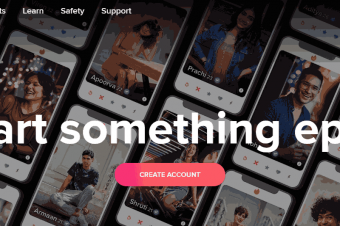Procurement Masterclass
Tags: Supply Chain
Gain expert-level knowledge of world-class operational procurement with this comprehensive overview.
Last updated 2022-01-10 | 4.4
- The purchase to pay process and why it is so important to manage spend in an organisation- How supplier payments are handled and how they should be linked to upfront approvals
- The importance and approach to procurement training
- to ensure users are well equipped
What you'll learn
* Requirements
* There are no course requirements of prerequisitesDescription
- The purchase to pay process and why it is so important to manage spend in an organisation
- How supplier payments are handled and how they should be linked to upfront approvals
- The importance and approach to procurement training, to ensure users are well equipped
- Catalogues, shopping carts, electronic purchase orders and other concepts
- Different types of spend compliance and why its important to use these to improve procurement
- Different ways of matching documents to control the purchase to pay process
- What a limit order is and how it is used for commodities which cannot be catalogued
- The importance of the purchase order number and why the supplier must quote it on their invoices
- Centralised buying can be more efficient, especially when employees are too busy to use purchasing systems
- How a central payments department receives invoices and makes payments using automated invoice scanning
- Why its important to link procurement system access to user training certification
Course content
7 sections • 22 lectures
Introduction To Procurement Masterclass: A Complete Guide To Purchase To Pay Preview 03:21
Welcome to this course. We will be covering aspects of Procurement which relate to the “Purchase to Pay” process. It might be called slightly different things in different companies but the principles and industry best practices are exactly the same. The purchase-to-pay process is a very specific set of steps that relate to the way an organisation buys from their suppliers. Whether it’s a box of paper for the photocopier or a new and expensive IT server, there are very specific practices that a procurement department will need to put into place. Large companies spend millions with their suppliers and these processes must be well managed. These lectures take you through a range of topics that are important for improving procurement in an organisation.
Let's Celebrate Your Progress In This Course: 25% > 50% > 75% > 100%!! Preview 01:20
Throughout this course we will celebrate your progress at 25%, 50%, 75% and 100%. I really want you to succeed but you need to take action and keep going so look forward to these milestones of progress. I will see you there and cheer you on as you keep going from one milestone to the next >>
Whiteboard Overview Lesson: All Key Concepts Of Purchase To Pay That You Need Preview 18:00
In this whiteboard overview lesson I break down the whole purchase to pay process for you and highlight the key elements you need to know. This lesson is a crucial introduction to the rest of the lessons which go into more detail on each aspect of the process.
Introduce Yourself To Your Fellow Students And Tell Us What You Want To Learn Preview 00:16
Handy Workbook For Procurement Masterclass: A Complete Guide To Purchase To Pay Preview 01:11
You've Achieved 25% >> Let's Celebrate Your Progress And Keep Going To 50% >> Preview 00:24
Throughout this course we will celebrate your progress at 25%, 50%, 75% and 100%. I really want you to succeed but you need to take action and keep going so look forward to these milestones of progress. I will see you there and cheer you on as you keep going from one milestone to the next >>
Learn About The Types Of Spend Compliance: Supplier, Channel, Non-Compliant Preview 05:58
Its very important to spend money in the right way, with the right suppliers, and this is the main reason for setting up an efficient purchase to pay process, and implementing a system to support it. Unless every cent of 3rd party spend can be accounted for in the right way with the right supplier, you are losing money. If the operational terms and conditions of the contract can be put in place through proper purchasing, then the hard work and benefits of excellent contract sourcing can flow downstream to the rest of the organisation. There are two dimensions to compliant spend: channel and supplier. Channel compliance defines the authorised processes in which a company spends its money, and supplier compliance defines the framework for approving with which vendors that money can be spent.
Grasp Key Concepts Similar To E-Commerce Like Catalogues And Shopping Carts Preview 09:17
Amazon is, of course, one of the most well known online shopping brands, but e-commerce is relatively new, considering that people first exchanged goods with each other about 8000 years ago. Putting your purchases into a shopping basket and paying for them when you walk to the front of the shop was common practice for over a hundred years before it moved online. Using digital processes to buy from suppliers is known as e-procurement. During my career I have hosted many training sessions and workshops on e-procurement and in these, I always ask the audience whether they have bought something over the Internet. Usually, the majority of attendees responded that they have, a cue that I use to explain that "e-procurement" is very similar to this type of shopping and offers a degree of familiarity with systems that most large organizations will have in place for their Purchase to Pay process. I then explain that catalogues, how they are used and how they work, are an integral part of online purchasing, which is the focus of this lesson.
Understand Efficient Purchasing And How Good Practices Reduce Overall Costs Preview 04:09
So far we have learnt about the types of spend, as well as how you can set up a catalogue for employees to purchase items which are then approved and goes to the supplier as a purchase order. If you have recently introduced this process then you will need change management, training and communications to help everyone use the new system effectively. This is important because systems such as SAP or Oracle can be very expensive to implement and you won’t get the benefits from them unless they are actually used, and used in the right way. There is also still an operational cost of processing each purchase order, so its important to ensure that you get the maximum amount of value from each one and this can be achieved by grouping together as much as possible in one shopping cart, its very common for each department to have someone do this, so that you avoid purchase orders with one pencil, for example. During the shopping cart approval process, the system will also group together common products into a combined purchase order and if you analyse the ration of shopping carts to purchase orders you can see if the organisation is getting more efficient or not. At one of the large organisations where I implemented a purchase to pay process with a IT system, we did this analysis.
Learn All About How Requisitions & Approvals Work In Purchase To Pay Preview 08:37
You've Achieved 50% >> Let's Celebrate Your Progress And Keep Going To 75% >> Preview 00:29
Throughout this course we will celebrate your progress at 25%, 50%, 75% and 100%. I really want you to succeed but you need to take action and keep going so look forward to these milestones of progress. I will see you there and cheer you on as you keep going from one milestone to the next >>
Improve Your Procurement Training To Drive World Class Purchase To Pay Practices Preview 07:01
We’ve learnt so far that the Purchase-to-Pay process is a series of steps that are usually enabled by a central procurement system. Knowledge of this process by everyone involved, is critical and this is why training is so important. The good news is that the process itself is an industry standard and its actually quite easy to learn. Let’s just recap exactly how it works: first a user looks on a catalogue for what they want to buy, then they put those items in a shopping cart which must be approved by the manager of the budget and possibly also a non-financial approver. There could be some differences for project related spend but once that shopping cart is approved, it becomes a purchase order and goes to the supplier, usually electronically and either one at a time or in a batch process.
Learn About The Anatomy Of A Purchase Order: What Goes In The Header Preview 05:58
Until a Purchase Order is created by the purchasing organisation and received by the supplier, no legally binding purchase process has been initiated. Purchase orders can also be manual or electronic but there are generally agreed principles and standards for purchase orders, for example it must at least display certain header and line item information. The purchase order is the most critical document in the Purchase to Pay process as we’ve discussed in a previous lesson. Without a purchase order, any payments at a later stage are done without reference to an upfront approval to spend that money and this can be a risk. Good practice procurement requires that before a supplier delivers goods or services, there must be a written order which contains certain information and which has been through an auditable approval process.
Learn About The Anatomy Of A Purchase Order: All About The Line Items Level Info Preview 04:44
Each individual commodity will be listed separately and designated with an item number. There will also be a Delivery Date for each line item which is often specified in the contract and relates to certain service level agreements that might have been negotiated for the maximum amount of a time that a supplier has to deliver certain goods. Each line item will also have a Long Description which is A standard field that is automatically pulled through from the catalogues for that supplier.
There Are Different Types of Purchase Orders: Master Them In This Lesson Preview 08:03
In a previous lesson, we looked in detail at the Purchase Order, which is a standard document used in the Purchase-to-Pay process. Although a Purchase order marks a confirmed and approved order with a supplier, it is important to note that there are a number of different methods by which the purchase order will be transmitted to the supplier, depending on the contractual relationship that the organisation has with them as well as whatever technical capabilities may or may not be in place. I used to get asked why our suppliers did not get their purchase orders immediately. Suppliers have signed contracts which commit them to timeframes so its obviously important for them to get their orders as soon as possible. This does mean that the people in the purchasing process must also have some awareness of how the particular supplier actually gets their orders. Even if the purchasing people are not technical, they should know something about how the different types of purchase orders are handled.
You've Achieved 75% >> Let's Celebrate Your Progress And Keep Going To 100% >> Preview 00:31
Throughout this course we will celebrate your progress at 25%, 50%, 75% and 100%. I really want you to succeed but you need to take action and keep going so look forward to these milestones of progress. I will see you there and cheer you on as you keep going from one milestone to the next >>
Learn All About Powerful Procurement Controls Such As 2-Way and 3-Way Matching Preview 06:11
So far in this course you’ve learned about how purchasing works, what are the key things to focus on and what are the main concepts you need to understand. In this lesson you will learn about the main documents in the process and how they link together to achieve the right levels of control. Linking these documents together also ensures that the purchasing process is auditable and payments can be traced back through the organisation. In this lesson you will learn about the documents in purchase to pay and we will describe the two main types of document matching, as well as the different aspects of each of these methods.
Tracking Orders And Centralised Purchasing Teams To Improve Control Of Buying Preview 06:33
Lets say it’s the first time you’ve ever used an online shop to buy something. It’s a big step from actually having the physical goods in your physical shopping cart. Once you’ve gone through the process you would be forgiven for worrying about what happens next. There’s one big difference between private ecommerce and e-purchasing. If you buying something for your home, you generally need to pay up front, but in the corporate world, the supplier must deliver first before payment can be received. Even so, users of a corporate purchasing system might often be left wondering how they will know what happens next once they have ordered something.
Making Payments To Suppliers Preview 09:08
Once an invoice is received, then you are liable to that supplier as the goods or services have been delivered in good faith, whether or not there was a purchase order in place. Where the PTP process has been followed and all source documentation and approvals are in place, the payment step is just a formality. This step can even then be automated using intelligent invoice scanning with exception processing. It is, however, worth noting a few aspects of this critical step in the purchasing process, to ensure that there is the right focus on the right activities and the right principles.
Map Out Your Purchase To Pay Process
In this assignment you will take what you have learned in this course and apply it to your situation. If you are in a purchasing organisation, or if you are a supplier this assignment is still applicable to you.
Are You Studying? Get Coaching, Courses & Community @ The Student Success Coach Preview 03:21
Are you studying and need help? ??? Do you need a breakthrough in a specific area of your degree? Join thousands of my other students that have learnt to: write, plan, reference, get motivated, organise their time and benefit from so many more tips and techniques. ?Achieve your goals! Write better, research better, finish your reports! Study harder, go further, get your degree and make your contribution. My name is Peter Alkema and I am your online student success coach. I have PhD and I've helped thousands of my students achieve their goals, like Flora Makgale: "What an amazing course! After finishing this course, I have confidence. Thank so much Dr Peter Alkema" Tulongeni Shilunga: "This is exactly the jump-start I needed. Very clear and concise." Lebogang Tswelapele: "This is what I have been longing for" Paskalia Ndapandula: "Peter speaks with so much clarity" Werner van Wyk: "Thank you Peter, once again your lesson and course have given me so much knowledge and understanding" Yvonne Rudolph "I really look forward to take everything i learned in action" Josephine Mahlangu: "exactly what I needed to know, absolutely valuable and helpful for my personal growth"
You've Achieved 100% >> Let's Celebrate! Remember To Share Your Certificate!! Preview 01:04
Throughout this course we will celebrate your progress at 25%, 50%, 75% and 100%. I really want you to succeed but you need to take action and keep going so look forward to these milestones of progress. I will see you there and cheer you on as you keep going from one milestone to the next >>








 This course includes:
This course includes:














